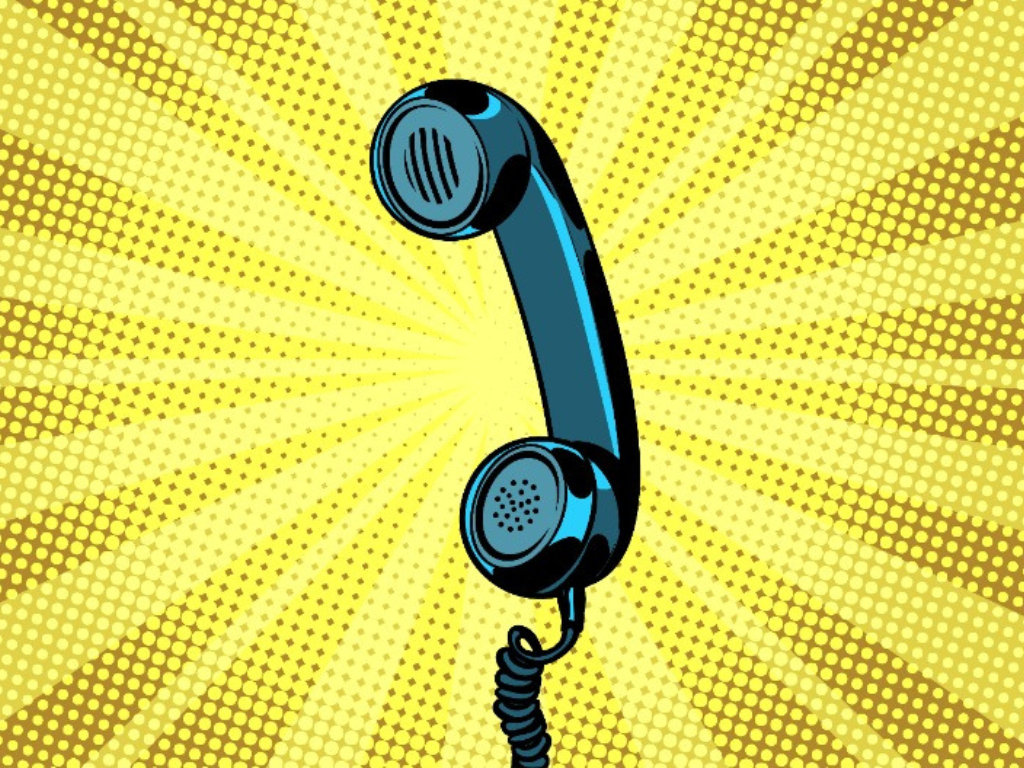Do you ever get the feeling that if you could just talk directly with each of your donors, most of them would gladly give?
That is mainly true. Most of your donors want to give. They believe in your cause and want to make a difference. After all, they are already donors!
Two things keep them from giving:
- They don’t even know you’re asking — because it’s so difficult to get their attention.
- They don’t realize how important and relevant to them your fundraising is.
Mass communication, such as direct mail, email, social media, etc., can do a decent job overcoming those things, but if you want to make sure you have their attention and you’ve made the ask personal to them, you need to talk to them. Person to person.
Don’t panic! I’m not about to tell you that you must call or visit every one of your donors.
That would not make financial sense. If you take staff time into account (which you should), the cost of a personal visit would be hundreds, maybe even thousands, of dollars. Personal visits make most sense for your donors most likely to donate large amounts.
A phone call would be considerably less, but still not as cheap as you think. Sure, call costs are cheap these days – but it is the time costs. For every 10 minutes you spend talking to someone, you will likely spend 10-20 minutes trying to talk to someone!
But for some of your donors, that thoughtful investment should pay back very well.
Usually this is about 20% or so of your donors – or those who give well above average value gifts. For them, a personal call can be a powerful and highly effective way to connect and get additional donations.
And because you are calling people who are already ‘top’ donors, these calls are nearly always a lovely experience. So, let’s get calling…
1. Introduce yourself!
This is where you show them you are a real person. (They get a lot of calls from robots and spammy telemarketers, so this step is super important.) Start with topics like these:
- Make sure you’re talking to the person you intend to reach.
- Thank them & tell them where you’re from.
- Ask if now is a good time to speak.
- Thank them for their previous giving and tell them about the impact they’ve made by telling them a story. If you can, a story about someone you’ve met that they’ve helped. Or something you’ve seen.
- Thank again and ask them their story too. Why they choose to keep supporting the cause.
2. Coming to the point…
If you’ve talked to this donor before or they’ve returned a Supporter Connection Survey, you have great information at hand: They’ve likely told you why they support your cause.
And maybe even why they support the actual project or initiative you are telling them about.
As much as possible, reflect the donor’s own words. This helps for a successful transition to a specific ask and this puts the ask into the context of the donor’s passion and values.
3. The Ask!
Three sentences or less. Invite the donor to make a gift for a specific purpose. If you can, explain the consequences of failing to reach the target. But if not, share the benefits of the gift to the organization and to the donor.
Ask with confidence, passion and expectancy.
Some helpful lines…
- “[We] have a big campaign I think you would be interested in…”
- “It is a big target – because it needs to be…”
- “I need you on the team if we are to make this target…”
- “I am asking a very small group of people; like you they have all given very special gifts…”
- “To inspire people to give, we know if we can get a small group of people to pledge to donate in advance…”
If you know the value of gift you are after, and why – share that. It’s OK to spell it out.
- “I really have no idea about your personal financial circumstances, but you’ve donated well above average before. I wondered if a gift of $<1,500> would be something that you can help with?”
Have a reason – a good solid reason – for a deadline. This will make a huge difference in avoiding ‘not now’ answers and can often create an additional gift opportunity.
4. Await their answer in silence
This is the most difficult part of any call. Stop talking and wait for the donor’s response. It will feel awkward to you and all your instincts will be calling on you to fill the silence!
But this silence is critical. It is you listening to the donor. It creates a space for the donor to think and demonstrates respect for them, which further earns their trust.
5. Discuss and negotiate
It’s quite likely you’ll get a “no.” That is not necessarily the end of the conversation or time to give up. It is an opportunity to find out what the donor is saying no to and why. Your first concern is to deal with specific concerns raised by the donor rather than closing the gift. Don’t jump to lowering the ask.
Acknowledge the objection and identify their concerns by listening, then address concerns through discussion and negotiation.
6. Close the gift
Closure is possible ONLY when you and the donor reach a consensus on next steps.
It is important you agree how and when they will make the gift. For example…
- On credit card now (rare but happens!).
- They will send a cheque.
- They want an invoice (usually if they are giving through a company).
- They want a confirmation letter or email.
- They will click a link to donate online, which you will send (and check they receive and it works before ending the call).
As part of the close, repeat it back, clearly.
“Thank you so much <Alex>. You’ve agreed to help with a donation of $<x,xxx> which you will make online by clicking the link I just shared before this Friday. If you have any problems, you can call me on <### ### ###>. My name is <Sean> and I’ll give you a call too on Friday to confirm receipt or help if there are any issues. Is that all right?”
Share any additional information. For example, if you were asking them to contribute to a match fund, tell them when the matched campaign will be, that they may see other campaigns in the meantime, and that you will update them on how the campaign performed.
7. Thank, and end
Always end the call with thanking! Even if they are not donating this time.
Finally…
You may be new to making calls like this. It can be a little intimidating. So, I have some little tips to help you get going:
- These are lovely people you are calling, who care about your cause!
- Don’t have unrealistic expectations. Only a minority are likely to give.
- You can’t fail. Those who don’t donate now got thanked, told how valuable they were, and you listened to them. They are more likely to give in the future and may well give more.
- Every positive communication increases the chance of a person deciding to add your cause to their will.
- Every call you make is giving you more and more feedback and understanding… you’ll get better at it.
- Share your call experiences – with others making calls in your organization, and other members in the Moceanic Fundraisingology Lab.
- Believe it or not, most fundraisers don’t ever talk to donors! You’re really boosting your future career and employment prospects too.
Now it’s time to make some calls! Enjoy and let me know how it goes.
NOTE: Credit to ideas from two really cool books which have had a big influence on how I help fundraisers structure their asks:
- The Influential Fundraiser by Clare Segal and Bernard Ross.
- Achieving Excellence in Fundraising by Eugene R. Tempel, Timothy L. Seiler, Dwight F. Burlingame.
Want some one-on-one help for building your relationships with your top donors? Schedule a free 25-minute call with Fundraisingologist Sean Triner. He’ll give you great free advice and help you identify your best path forward. Click here to book your call.
Related Blog Posts:










